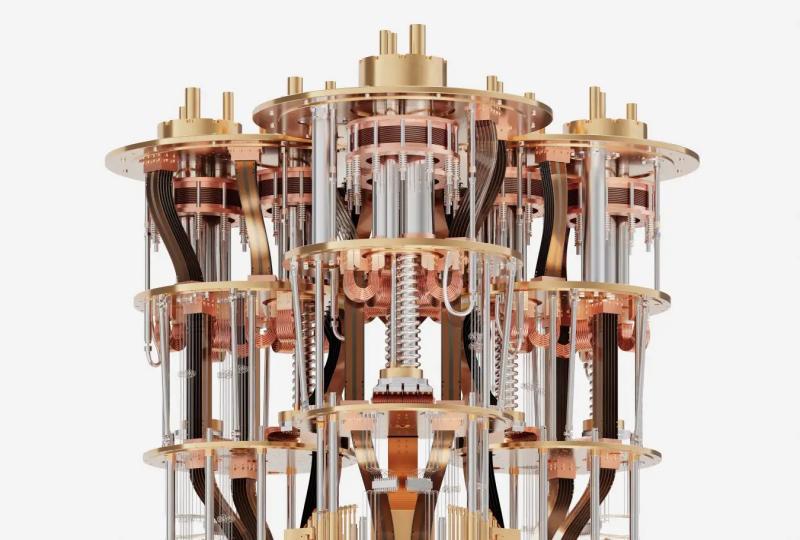What is a Transmon Qubit? Key Features and Applications
2025.03.22 · Blog
In the rapidly advancing field of quantum computing, the transmon qubit has become one of the most widely used types of quantum bits. But what exactly is a transmon qubit, and why is it so important for the future of quantum computing? In this post, we’ll explore the key features of transmon qubits, how they work, and their role in driving quantum technologies forward.
What is a Transmon Qubit?
A transmon qubit is a type of superconducting qubit commonly used in quantum computing. It is based on a superconducting circuit that stores quantum information in the form of discrete energy levels. Transmon qubits are a variant of earlier superconducting qubits and were introduced to address some of the challenges posed by earlier designs, such as sensitivity to noise and fluctuations.
The "transmon" name comes from the fact that this qubit is a type of transmission line resonator, which is used to store and manipulate quantum states. Transmon qubits use a Josephson junction, a key component in superconducting circuits, to create quantum energy levels that can be manipulated to perform quantum operations.
Key Features of Transmon Qubits
1. Reduced Sensitivity to Charge Noise One of the biggest challenges in quantum computing is noise, which can degrade the accuracy and stability of quantum operations. Transmon qubits were specifically designed to be less sensitive to charge noise—fluctuations in the electrical charge that can cause instability in quantum states. This makes transmon qubits more stable and reliable for large-scale quantum computations.
2. Higher Coherence Time Coherence time refers to how long a quantum system can maintain its quantum state before it loses its "quantum-ness" due to environmental interference (decoherence). Transmon qubits typically have a longer coherence time compared to earlier types of qubits, making them more suitable for performing complex quantum operations over longer periods.
3. Scalability Transmon qubits are relatively easy to scale up for large quantum systems. Their design allows for the integration of many qubits into a single quantum processor, an essential feature for building large-scale quantum computers capable of solving real-world problems.
4. Robustness The transmon qubit’s design makes it robust against certain types of decoherence caused by environmental factors like temperature fluctuations and electromagnetic radiation. This robustness is crucial for building practical and stable quantum computers that can function outside of highly controlled laboratory conditions.
How Do Transmon Qubits Work?
At its core, a transmon qubit operates based on the principles of superconductivity and quantum mechanics. The Josephson junction in the transmon qubit acts as a non-linear inductance, which allows the system to exhibit quantum behavior, including the creation and manipulation of superpositions and entanglements—key features of quantum computing.
The qubit’s energy states are discrete, and it can exist in a superposition of these states, meaning it can simultaneously represent multiple possibilities (0 and 1) until measured. By applying microwave pulses at specific frequencies, quantum operators can manipulate the transmon qubit to perform computational tasks. The challenge is maintaining the quantum state long enough to complete computations without losing information to noise and decoherence.
Applications of Transmon Qubits in Quantum Computing
Transmon qubits are currently a cornerstone of many leading quantum computing platforms, including those developed by companies like IBM and Google.
They play a crucial role in:
Quantum Algorithms Transmon qubits are used to perform quantum computations that leverage algorithms like Shor’s algorithm for factoring large numbers or Grover’s algorithm for searching unsorted databases more efficiently than classical computers.
Quantum Simulations With their increased stability, transmon qubits are excellent candidates for running quantum simulations, which can help researchers study molecular interactions, optimize materials, or simulate complex systems that are difficult or impossible to model with classical computers.
Quantum Cryptography Transmon qubits are also being explored for their potential in quantum cryptography, particularly in quantum key distribution (QKD) systems. Their reliability and robustness make them suitable for secure communication protocols that are resistant to classical eavesdropping.
Challenges and Future Outlook
While transmon qubits are a significant advancement in quantum computing, they are not without their challenges. The need for extremely low temperatures (close to absolute zero) and precision in controlling quantum states can be obstacles in building scalable quantum systems. Additionally, error rates, while reduced, still need improvement for transmon qubits to be viable in large-scale quantum computers.
However, ongoing research and development in quantum error correction and qubit design are expected to improve the performance and scalability of transmon-based quantum processors. As quantum computing continues to evolve, transmon qubits will likely play a central role in enabling practical, large-scale quantum computers.
Featured Content






